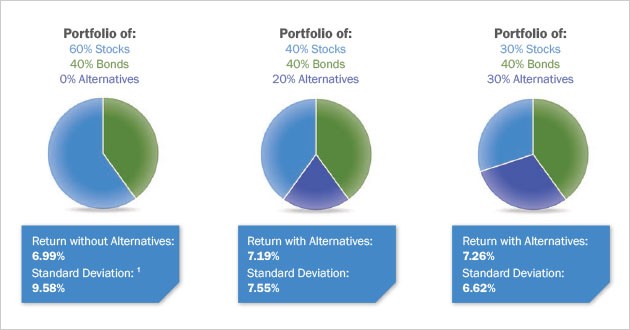Alternative funds for investors
Post on: 14 Апрель, 2015 No Comment

Investing in the new economy
Unfortunately, volatility is the name of the game when it comes to investing.
Asset allocation and diversification strategies are generally the most common ways to reduce risk. But the smart money — aka pension fund managers — increasingly rely on alternative investments as part of their investing arsenal. Some 34 percent of institutional investors revealed that alternative assets comprise more than 25 percent of their portfolio holdings, according to the 2010 Alternative Investment Survey of U.S. Institutions and Financial Advisers, released in January by Morningstar and Barron’s.
Individual investors also have access to alternative strategies in mutual funds that may provide some padding in times of market volatility.
By investing in different asset classes such as currencies and commodities and also by trading the same or different asset classes in different ways — either by shorting or hedging — the risk and return (characteristics) of these investments are different than what currently exists in your portfolio , says Nadia Papagiannis, alternative investment strategist at investment research firm Morningstar.
Long-short funds
When you own an investment, you probably expect it to appreciate in price. That means you have a long position.
Shorting, on the other hand, is a bet that an asset, such as company stock, will fall in price.
Rather than just buying investments that they expect will appreciate, long-short funds hedge risk by creating returns from their long and short positions.
A long-short would be something like a 130-30 where you have 130 percent of the portfolio long and 30 percent short in whatever universe you’re looking at, says Adam Patti, CEO of IndexIQ, a mutual fund and exchange-traded fund company offering alternative index funds.
Long-short funds can focus on equities, fixed-income or alternative investments such as currencies or commodities.
The goal is to protect against big drops on the downside and capture part of the upside over time, says Papagiannis. If you pick a good manager, the risk-adjusted return could be better than a long-only investment.
But their track record is far from stellar. According to Morningstar, on an annualized basis, long-short funds gained 1.24 percent over five years through April 25, compared to 2.66 percent for the Standard & Poor’s 500 index.
Managed futures funds
Managed futures funds are funds that buy and sell futures contracts.
The futures market is a centralized marketplace where people can buy and sell contracts on the future value of commodities or financial instruments. Farmers use these contracts to sell grain to food manufacturers for a specific price at a future time to hedge against price risk.
Speculators get in on the action by buying contracts on a commodity such as coffee, betting that the contract will increase in value between now and the date of delivery. That contract has an investment value apart from coffee beans, and the contract is what speculators trade.














